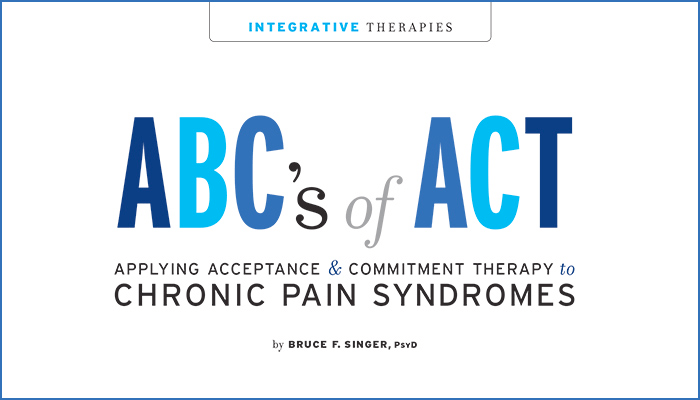Revealing the Benefits of Acupuncture for Chronic Pain

Have you ever wondered about treating your chronic pain with acupuncture? It’s been around for thousands of years, yet many people still don’t understand it or are misinformed about it. To learn more about acupuncture for chronic pain, we reached out to Dr. Keoni Teta, a licensed acupuncturist at the Naturopathic Health Clinic of North Carolina.
Here’s what he shared with us:
How acupuncture helps people with chronic pain
“People in chronic pain are often left with few choices when it comes to conventional medicine. The options are usually drugs that include muscle relaxers, steroids and pain-killers – all have the potential of negative side effects. If the drugs do not work, surgery is usually the only option. And sometimes the surgery can make things worse.
Since acupuncture is considered a non-invasive treatment, especially when compared to the conventional approach, it has a big advantage over standard treatment. Some may say, “Okay that’s great, but does it work? Does research support its use in the clinical setting for chronic pain?” The answer is yes to the first question, and an emphatic yes to the second!
Most people with chronic pain have a long history of trying to get help with conventional treatment before trying acupuncture, and as such have been worked-up extensively. With that said, acupuncture should be tried before drugs and surgery if all the dire and emergency medical scenarios have been ruled out. Or at the very least, acupuncture should and can be used in conjunction with the conventional approach. It should help to reduce medication and possibly avoid surgery.”
How it works
“Acupuncture uses very thin needles to stimulate points on the body to improve well-being. But we don’t know exactly how it works. What we do know from a clinical perspective is that it relieves pain. We just don’t know the exact biochemical mechanisms of how it heals. Evidence shows it may work by the following mechanisms:
- It causes your body to secrete its own anti-pain chemicals, like endorphins and encephalins.
- Needling in areas of chronic pain creates micro-inflammation, which then wakes the body up to chronic pain and hastens the healing reaction.
- It causes your body to secrete the so called feel-good chemicals, like dopamine and serotonin, thus helping to accelerate healing.
For a simple explanation from a Traditional Chinese Medical (TCM) perspective, pain is almost always characterized as qi stagnation or qi imbalance. Ancient texts generally describe qi has the energetic “substance” that gives your body life. It flows throughout the body in a smooth and unimpeded way unless you have some sort of physical or emotional trauma. Qi can be obtained or lost depending on the quality of one’s lifestyle habits.
A TCM practitioner sees the western explanation of how acupuncture works as just a cultural way of explaining qi. Decreasing inflammation or increasing endogenous anti-pain chemicals, enables better qi flow. Also poor lifestyle habits deplete qi which increases the likelihood of chronic disease.”
How it can be used with other therapies
“Acupuncture can be used with other therapies, and in some instances it should. In fact, traditionally, acupuncture is rarely used alone, and most times is combined with other TCM modalities, like cupping (suction), gua sha (scraping), herbal medicine, tuina (tissue manipulation), or moxibustion (heat). With that said, it is a great standalone treatment for pain.
Modern modalities of medicine like, physical therapy, chiropractic, and massage can be used as additional therapies with acupuncture, and appear to enhance the treatment effects. Also, acupuncture can be used with conventional drugs treatment and surgery to reduce pain and enhance a therapeutic effect.”
Common myths about acupuncture
“One of the biggest myths about it is that it is painful. There is very little pain involved with most acupuncture treatments. Sometimes needles are stimulated to get what is called a qi grab that some might characterize as a momentary discomfort.
Anything that is not understood and is not prevalent in our culture is likely going to be deemed suspicious. It was not too long ago that acupuncture was considered a form of quackery by the western medical establishment. To a quickly shrinking minority it still is deemed suspicious, but this is the result of only ignorance … not lack of efficacy of treatment.”
The cost of acupuncture
“Costs vary, but typically an initial visit costs between $75 and $120. Follow-up visits usually cost between $60 and $90. Check with your insurance carrier to see if your plan covers acupuncture.”
Bottom line
“My advice to all people dealing with chronic pain is to choose a therapy that has evidence supporting its use, while at the same time also have a low risk of negative side-effects. Drugs and surgery may have evidence supporting their use, but when compared to acupuncture, the likelihood of negative side-effects is much greater. In general, treatment options should begin with the least invasive approach first.”
To learn about other therapies, read our articles on Powerful Alternative Therapies for Living with Neuropathy and Healing Begins From Within, an Integrative Approach to Pain Management.
If you’ve had experience with acupuncture for pain management, we want to hear from you.
PainPathways Magazine
PainPathways is the first, only and ultimate pain magazine. First published in spring 2008, PainPathways is the culmination of the vision of Richard L. Rauck, MD, to provide a shared resource for people living with and caring for others in pain. This quarterly resource not only provides in-depth information on current treatments, therapies and research studies but also connects people who live with pain, both personally and professionally.
View All By PainPathways






